Practical Reptile Keeping is the only monthly herp care magazine published in English. Launched in 2009, it attracts an international readership and is packed with advice on how to look after and breed snakes, lizards, tortoises, turtles, amphibians and bugs. As well as stunning photography, each issue features technical help, product information and health care advice to keep your animals in tip-top condition, plus breeding details and the latest news relating to this group of creatures from around the world.
Welcome
Research into the colours of the corn • Featuring stories that include the amazing and previously unsuspected way in which wandering salamanders have adapted to life in trees that can lead to them being over 110m (300 ft) off the ground, how lizards can play an unexpected part in habitat restoration, a freshwater turtle conservation success story, and more, including ways in which a species is fighting back against a new infection, plus the remarkable story of a moth, while starting here with new research into the diversity of colours and patterns that can now be encountered in the case of the corn snake.
How salamanders keep their balance
Lizards can assist habitat restoration
Bullfrogs croak, and turtles return
How amphibians aim to avoid infection
The remarkable story of a rediscovered moth
Care & breeding of the Arizona mountain kingsnake • Timothy Zedi writes about one of the favourite snake species that he has in his collection, providing a comprehensive guide to its care. This includes essential information on housing, temperature requirements, feeding, brumation and breeding practices to help you not only keep these beautiful snakes so they thrive, but also to persuade them to breed successfully as well.
Reptiles and sunshine • With forecasters suggesting that there could be a hot summer ahead, David Alderton suggests how your reptiles could benefit if you have access to a garden.
Go natural with plants! • With the increasing trend towards naturally planted vivariums, John Courteney-Smith outlines what is involved in creating a successful set-up of this type, and the benefits.
Settling in new arrivals
AMPHIBIAN FOCUS • Cave salamander (Eurycea lucifuga)
Wild foods for tortoises • Since they are herbivorous reptiles that are naturally inclined to browse, so it can sometimes be a challenge to supply tortoises with a suitably varied diet. But as explained last month, a range of cultivated plants can be purchased and propagated to provide nutritious food for them. In his second article, James Brereton focuses on wild plants that can also be used. As always, variety is of key importance: try to feed your tortoises with a wide range of different foods of this type!
Out of Africa Life in the trees • Thinking about how reptiles have adapted to different environments, Paul Donovan focuses on how lizards and snakes have moved up into the trees from the ground.
What snake would suit you? • Choosing your ideal snake can be difficult, but here veterinary surgeon and reptile enthusiast Dr Tariq Abou-Zahr sets out some of the choices to consider, whether you are a beginner, or already have some experience in this area.
Adventures in Madagascar Part Two • Joshua Ralph fulfills a long-time ambition, and heads to the Mitsinjo Amphibian Breeding Facility in Andasibe, Madagascar, from where he sends this report, following on from last month's account.
Practical Reptile Keeping
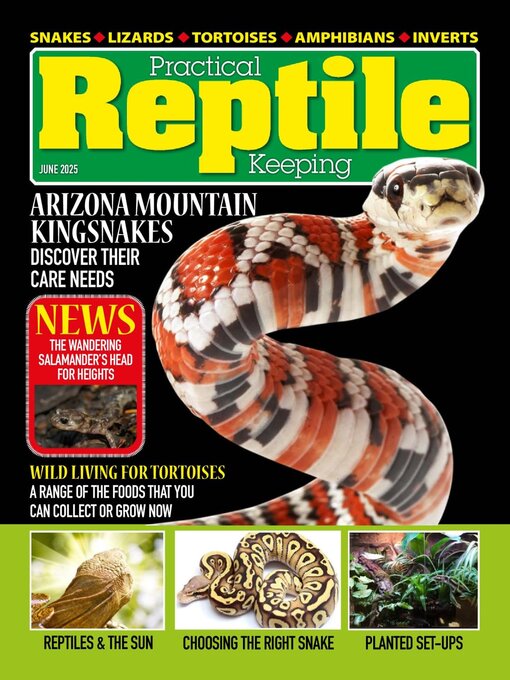
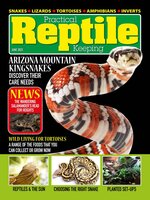 Jun 01 2025
Jun 01 2025
 May 01 2025
May 01 2025
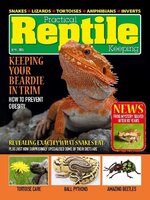 Apr 01 2025
Apr 01 2025
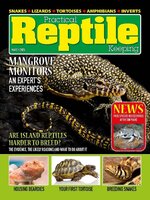 Mar 01 2025
Mar 01 2025
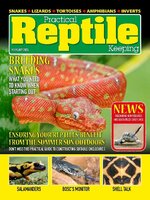 Feb 01 2025
Feb 01 2025
 Jan 01 2025
Jan 01 2025
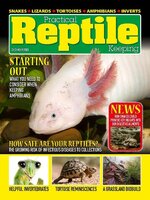 Dec 01 2024
Dec 01 2024
 Nov 01 2024
Nov 01 2024
 Oct 01 2024
Oct 01 2024
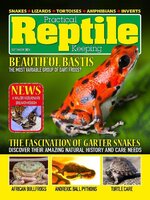 Sep 01 2024
Sep 01 2024
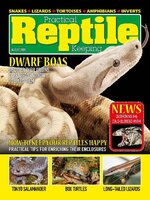 Aug 01 2024
Aug 01 2024
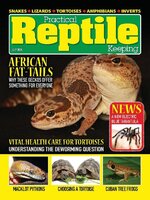 Jul 01 2024
Jul 01 2024
 Jun 01 2024
Jun 01 2024
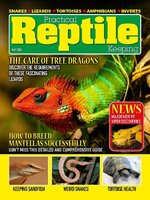 May 01 2024
May 01 2024
 Apr 01 2024
Apr 01 2024
 Mar 01 2024
Mar 01 2024
 Feb 01 2024
Feb 01 2024
 Jan 01 2024
Jan 01 2024
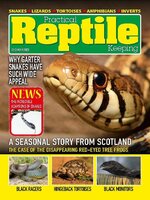 Dec 01 2023
Dec 01 2023
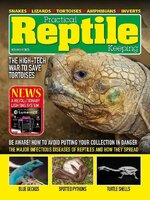 Nov 01 2023
Nov 01 2023
 Oct 01 2023
Oct 01 2023
 Sep 01 2023
Sep 01 2023
 Aug 01 2023
Aug 01 2023
 Jul 01 2023
Jul 01 2023